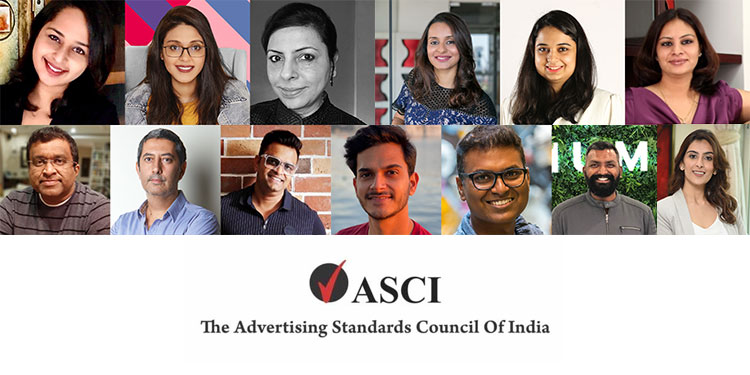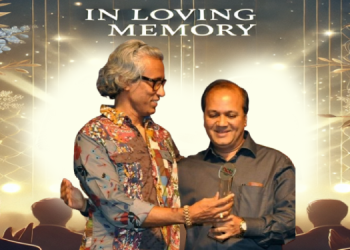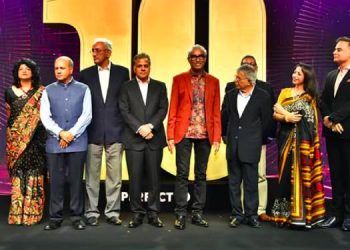ASCI launched a set of guidelines to monitor Influencer advertising and promotions on digital media. This is to enable consumers to easily recognize promotional content on digital platforms. Brands across sectors today are associating with influencers to get across their marketing messages. So, much of what influencers post is promotional, and a lot of it is not identified as such. Such non-disclosure is a disservice to consumers and is misleading.
MediaNews 4u spoke to a section of Digital marketers on these guidelines and how it will affect the Influencers and the brands they endorse.
ASCI new guidelines for Influencer marketing? Your thoughts

Neel Gogia – Co-Founder – IPLIX Media: I feel this is an initiative in the right direction, but it still needs some refinements; so that it does not affect the quality of the content which the influencers are creating. Firstly, I feel every platform needs a different outlay. For example, for YouTube, you know, sometimes the entire content can be made with a brand and if ASCI considers it like an ad, it’s not going to work. Because sometimes good brand associations can also add value to the audience and audience usually comes to say YouTube to watch content, they themselves click on the video considering that they will get some value out of it. So, we cannot first need to read every content piece made with a brand as an ad; it needs to be defined as branded content or maybe content made in partnership with the brand, but we cannot just define it as an ad and provide disclaimers; that will just create it like a brand film rather than good content, which is which has been created with the help of the brand.
It is not practically possible and no influencer can check whatever claims the brand is saying are true or not. They are just the medium to convey and they can maybe say that, according to the brand, these are the claims which they are claiming come.

Preetam Thingalaya, Director of Media at Mirum India: Evolution of a different kind. Well, I think it’s about time and I am glad this is has happened. Almost all digital ads today call out that “ you are watching or consuming an advertisement”, as a consumer ourselves we have experienced this when we have read an article of any portal or seen or exposed to a standard “digital banner”. You know when we are watching an ad on our TV set and we know, it’s a “paid spot”. I think it’s exactly like that but in a completely different ecosystem.
So in a nutshell, it’s a validation parameter and that’s welcome news.

Manesh Swamy, Vice President-Creative, Logicserve Digital: ASCI new guidelines have been clearly drafted keeping the consumer at the core. There is an obvious difference between UGC content and a paid post and the consumer has all the right to understand this difference. With these new guidelines’ consumers can now easily identify the influencer’s promotional content. Influencers will now have to go an extra mile to understand the brand, its claims, and the product/service benefits before they decide upon endorsing it. In my opinion, I liked the detailing done in the terms of disclosure labels, especially how hereinafter it’s must use them for all forms of content whether it is Stories, Reels, or Filters.

Anuja Deora Sanctis, Founder, and CEO, Filter Coffee Co: As the digital space becomes more and more integrated with our daily lives, it’s important to ensure that the audience is aware and educated about what is being shown to them. While influencers continue to gain more traction and share of voice in a brand’s communication, these guidelines will work as a subtle way of classifying content on the consumer’s feed without being intrusive or misleading.

Ambika Sharma, Founder & MD, Pulp Strategy: Advertising Standards Council of India (ASCI) has released draft guidelines for influencer advertising on digital media, to enable consumers to easily recognize promotional content on digital platforms. The influencer industry is growing fast. According to digital marketing agency AdLift, India’s influencer market is estimated at $75-$150 million a year as compared to the global market of $1.75 billion. This is an industry that has become mainstream within the advertising space and is only expected to grow as more and more Indians are going online. It’s no wonder that brands across sectors are associating with influencers to get across their marketing messages. So, much of what influencers post is promotional and a lot of it is not identified as such. Such non-disclosure is a disservice to consumers and is misleading. With the guidelines, ASCI will assist consumers, brands, and content creators to ensure all stakeholders’ interests are preserved through a self-regulatory approach. The digital space is huge and promotional content is often indistinguishable from regular posts. Consumers have the right to easily recognize promotional content. These guidelines will help the consumers to identify promotional content and also guide digital influencers. These guidelines will benefit the consumers and the digital influencers.
How would these guidelines now affect the various influencers endorsing products?
Neel: Now, obviously influencers will have to adjust to these guidelines because they can’t just straight away say no to business. They will slowly modify their content, making sure that they are able to match these guidelines, but the interesting factor would be that how they will communicate this to the audience- do they go straight forward and say that this is an ad or they look for creative roots, that how the same message can be communicated ensuring that audience still trust the influencer and they genuinely show that apart from this being an association they still believe in the partnership and genuinely recommends the brand.
Preetham: I think the influencer community will have to take this guideline with a pinch of salt. Basically, now all the influencers will have to say it in so many words that “I got paid to do this”. For some, this might not be welcoming news but for most, it will just raise the bar. I’ve personally observed international artists and influencers actually putting up an update that states “paid partnership with (Brands name)” One of the guidelines mentions that the influencer has to validate their claim. In a way, these guidelines ask for a sense of responsibility from the influencer community.
Again, it is not like this is happening for the first time or so, in traditional media, we have heard enough of artists refusing to endorse a certain brand because it doesn’t match or resonates with the artist’s personal values. And yes, expect a push back. But these guidelines will only separate the true influencers from the rest.
Manesh: It’s going to be a good guardrail for all the brand custodians. At times the influencers can go overboard with the product/service claims but with the new guidelines, it’s obligatory for them to do an in-depth study on the brand before they carry out promotions. Overall, brands might see a drop in engagement and reach. With the guideline getting in place starting 15th April, all the brands, agencies, influencers should start making amends in their influencer plans at the earliest.
Anuja: The guidelines are a directive towards the checks to be put in place when an influencer promotes a brand. On a key communication level, these endorsements will need to be tackled on a much more organic level, to set clear communication goals for the influencers.
Ambika: ASCI’s newly issued guidelines for influencer marketing are a good step towards transparency and trust. These guidelines will encourage a level of accountability by the influencers as well it will lead to positive outcomes for the industry in the long run. Honesty and transparency are important and these guidelines encourage that in letter and spirit.
How are brands going to be looking at these guidelines? What has made ASCI come out with these guidelines now?
Neel: Brands are going to be a little worried initially because the entire purpose of doing influencer marketing is to make it look organic, and show how these influences believe in the brand. Brands might feel initially that since they convey the content like an ad, it might not solve the real purpose. Now brands, with the help of agencies and internal teams will have to come up with creative routes so that they can still follow these guidelines and still get similar or even better results by following these guidelines. So, everything depends on how it has been communicated. I feel since there are lots of influencer campaigns that have happened in the last one and a half year, the influencers have taken advantage of their power as well and few of the influencers have also promoted products, which ideally they should not have done or maybe they would not have believed in. There are few scenarios where because of false claims it resulted in a negative impact to the audience as well. So, maybe these reasons would have been highlighted because if this continues to grow, there is no regularity and there is no clear communication to the audience. These may be the reasons why ASCI has come out with these guidelines.
Preetham: Any consumer first centric brand will welcome this. It’s a kind of an authentication parameter of the brand and the influencer for their consumer. Like in the case of the influencers, the validation of the claiming clause also puts the brand in the sense of responsibility bucket. Any claim by the brand or influencer has to be backed with data or authentication. Hence I feel, these 10 Guidelines, or I would like to call this – The 10 Commandments of Influencer Marketing is a draft designed to keep consumer safety as its priority. And I truly believe that the right influencer partner is worth more than almost 100 brand ambassadors.
Manesh: Influencer marketing is growing at a rapid speed, we all saw a major boom since last year under pandemic circumstances. It was in fact a key promotional tool for various brands during the tough times. I’m glad ASCI kept the consumers at heart and provided the required conditions to carry out fair influencer promotional activities. This will further add credibility and trust in the consumer’s mind towards the brand. In the case of the influencers, they will now have to be more transparent and responsible towards their audience while delivering promotional content. I’m sure these guidelines will be open for feedback from the industry and will be tweaked if required to benefit everyone at the large.
Anuja: The task at hand for brands now is to learn how to integrate these new guidelines and still push communication that is relevant, trustworthy, and organic using influencers. Disclaimers put on influencer marketing will now pose as a tough, but the necessary challenge for brands to leverage key opinion leaders to communicate to a more aware audience.
While this change has come recently in our country, we are seeing these guidelines being implemented around the world. The digital space being such an integrated part of a user’s day, plus the clutter of advertising and organic content, the lines are sure to get blurred leading to misrepresentation and misleading communication. This is a welcome change in a world where the audience is getting smarter.
Ambika: Brands will see this as a positive step, transparency, and honesty is important for them, as the consumers become aware of the guidelines genuine claims made by brands will receive more mindshare and acceptability. Guidelines will encourage influencers to study and research the brand/product and investigate their claims before publicizing them.
Consumers have the right to know what’s paid and what is organic, Influencer marketing has reached critical mass, there is a lot of content which is created by influencers. Lack of guidelines chipped away at the trust as a section of influencers shared content which was misleading. It’s the right time to build in reforms within the industry calling for transparency, accountability, and honesty.

Neha Puri, CEO and Founder, VavoDigital.
These newly setup rules might bring in a change in how influencer marketing is approached and utilized for brands. This would create better opportunities for brands to create responsible advertising for their audience, at large, thereby having the potential to create a long-term impact affecting consumers’ trust in the overall concept of advertising.
I don’t think this change is intended to constrain creativity but in a way further build trust in the consumer’s mind, that a product being promoted holds that same importance in the life of the influencer.
UAE in 2019 saw the potential in the influencer marketing industry and launched an NMC influencer marketing license. The influencer marketing industry in India is steadily growing and I believe every growing industry needs certain rules and regulations in place to streamline the industry.”

Atul Hegde, Co-founder, Rainmaker Ventures.
It’s good to see that ASCI recognizes Influencer Marketing (IM) as a serious, growing form of advertising and has decided to have draft guidelines for usage. It’s a welcome move for the entire IM ecosystem. My first reaction to the guidelines itself is trying to be too over-cautious to the point of being intrusive for the viewer or reader. A simple callout that specifies ‘this is a paid partnership’ is good enough and also an internationally accepted norm. The bigger challenge with so many specific guidelines is the implementation of it. We have seen how it’s been a challenge for ASCI in the past to deal with surrogate advertising, hope this does not go that route also. Nevertheless, a good movie, and I hope this helps brands, creators, and agencies.

Jo Broner, WIBA Spokesperson (Paris)
At the heart of it, ASCI is recognizing the digital influencer space as part of the mainstream industry now, which is very good news for the influencers. It is going to build more trust between the artists and their audience with increased transparency. It also means the marketers have to channelize verifiable information and not unverifiable marketing claims. Influencers connect with curated communities, who listen to them for the credibility they bring, so they have an inherent moral responsibility to not breach the trust of their audience, ASCI is bolstering it with new laws, and that is going to bring in due discipline in the environment, so it’s a welcome move.

Ankita Chauhan, Group Head Strategy, Tonic Worldwide – a digital-first creative agency:
As the word opinion leader suggests, influencers are leading opinion and influencing purchase decisions, across categories. A lot of time the content is promoted as a part of the larger story and seeded in subtly, making the whole placement look rather organic. However, consumers have full right to know what is paid and what is organic. It’s quite basic. I’ve observed several influencers labeling sponsored content and I think industry bodies making it a mandate only benefits the consumers at large.

Ashwini Deshpande, Co-founder & Director, Elephant Design – a design agency:
An influencer garners a large follower base because of consistent & aligned content for the kind of audience he/ she is aiming for. If the influencers want to continue getting followed by their audience, it is necessary for them to stay interesting and honest. Influencer marketing has reached a critical mass in India and it is the right time to have these clear guidelines from ASCI that protect consumers from being misled.
The draft guidelines by ASCI which are open for public discussion for the next few days have transparency at their core and should be welcomed by the advertising industry. The most important guideline on prominent labeling has been rightfully specified for each social media channel – will help the consumer from getting misguided by influencer advertisements.
The guidelines have ensured three prominent things:
- Any content where the brand has paid the influencer and has had reasonable control over the content needs to be called out as ‘advertisement’.
- Influencers must make it obvious that the content is an ‘advertisement’. This should be a clear indication to the follower that the content has a bias.
- If the influencer is making some specific claims, they should be diligently substantiated by the advertiser or brand owner

Rajni Daswani, Director at SoCheers – an independent digital agency:
Influencer marketing is a $100 million industry in India now, and brands of all kinds – big or small – are benefiting from using influencers & content creators to drive their business objectives. The fact that it’s been unregulated so far, we have seen some brands sneakily get away with things that would not be considered ethical if it were to be shown in a TVC or an OOH. The guidelines will serve as a good guardrail in these cases. However, on the flip side, the popularity of influencer marketing in a brand’s marketing budget is due to the flexibility of communication that allows them to showcase the benefits of their products & services in different ways without it looking very promotional. Digital consumers today are smart enough to understand what an Advert vs. what is organic is, and hence brands are willing to pay more to get their promotional material to look as organic as possible. With these guidelines kicking in, we might see the overall engagement and reach with influencers drop andmight see it get the same status quo as a paid media ad on digital. I think while these guidelines are necessary, they should not be extremely stringent so as to avoid creating a dent in the overall influencer marketing industry that is growing at a faster pace than ever.

Kunal Kishore Sinha, Co-founder, ClanConnect
ASCI’s newly issued guidelines for influencer marketing will unlock a wealth of new opportunities for the fast-evolving segment that will result in positive outcomes for the sector in the long run. When a major industry body such as the ASCI deems that there is a need to introduce guidelines for influencers and the influencer marketing community, it shows how the market has evolved and has assumed a mainstream stature in the larger advertising space. These guidelines will not only streamline the space and offer a direction but also ensure that there is an added sense of social responsibility amongst the influencer community.
Needless to say, we welcome this move by the ASCI for the segment as it will act as a guiding light for new and established content creators, who will now be more mindful of the kind of content that they are bringing to their target audiences. An extremely positive move from the ASCI, these guidelines will act as a catalyst for more organized and structured platforms such as ClanConnect to set new benchmarks for the industry as a whole. Platforms such as ours will play a major role in assisting content creators in navigating through the various regulations and conform to them without any inadvertent missteps. With ASCI introducing these guidelines, the influencer marketing segment also joins the league of recognized and celebrated domains of the advertising ecosystem and indicates further growth and evolution for this space.

Dharika Merchant, COO, WORD and Alchemy Group
The guidelines issued by ASCI are a positive step towards regulating the industry since these directives will primarily require all promotional posts to be more transparent. The industry gets introduced to new brands and a new influencer on almost a daily basis, thereby making it difficult for the consumers to make an informed decision. With these regulations, consumers will now be able to easily identify between an advertisement or organic content. We welcome this change and are excited to see how this transforms the industry for good. This will enable both brands and influencers to now work more creatively to produce content that helps the brand and the audience.

















